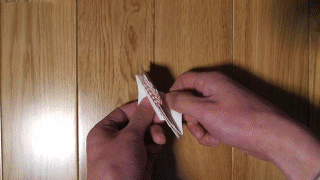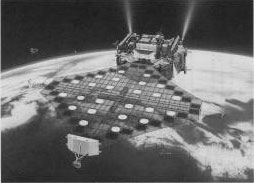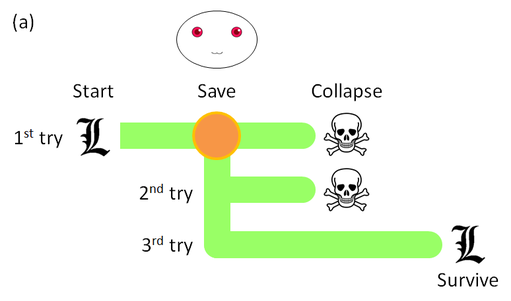|
I'm honored to serve as the undergraduate representative on MIT's Task Force on Open Access. Some have asked me, "what is open access?" Among many things, Open Access (OA) aims to make research free to access, distribute and build on top of. One might call it a "Creative Commons or Free Software movement for research." This post gives a brief overview, but I'd be excited to answer your questions about anything OA! Why don't we already have OA? Mainly because the majority of scholarly peer-reviewed articles are published in academic journals, ~75% of which with charge steep subscription fees (i.e. "toll access") [1]. In 2016 the MIT Libraries paid over $6 million to give MIT affiliates free access to some subset of journal articles [2]. Is journal pricing "fair"? Some facts: The research community submits articles, peer-reviews them and serves on editorial boards, all for no pay from publishers, with university salaries from mostly public funding. Toll-access journals do copy-editing, formatting, marketing etc, but make disproportionate profits: Publishing giant Elsevier reported a profit margin of 36%, more than Google, Amazon or ExxonMobil [1,3]. Most subscription revenue comes from publicly-funded university libraries, whose budgets grow much slower than subscription costs. Small universities and research institutions, especially those from developing countries, are most vulnerable. Is OA only for journals? No, it can cover research datasets, course materials (like MIT OCW), digitized print work, source code, images and much more. For example, the Open Science Framework aims to make transparent and provide OA to every aspect of the research cycle. Science and humanities face similar issues in OA. OA can include all forms of content like novels, movies, software etc, but it's focusing on research because researchers want to distribute their results for free. How does this affect me? Besides ensuring your current and future access to scholarly publishing, access to the fruits of research should be expanded beyond the elite institutions that can barely afford the steep journal subscription fees, to developing countries, to precollege classrooms, and to non-researchers such as journalists and policymakers. That would be more equitable, and would accelerate innovation in science and the humanities. How can I help? I welcome you to learn more about OA by reading or attending conferences, and contribute to OA projects like the aforementioned Open Science Framework and Right to Research, or even organize an open access hackathon! Where can I learn more about OA? Jean-Claude Guédon's article "Open Access: Toward an Internet of the Mind" introduces the history, landscape and nuances of OA quite well. If it seems long, just read the bullet-pointed history starting from page 8 to see how we got here. Sources
0 Comments
(This post is for prospective freshmen enrolling in the Massachusetts Institute Technology. I wish I knew all this early enough, so now I'm telling it to you!)
Origami? Folding bits of paper? You mean that children's pastime? It can't possibly be of any "real" use, right? What if I told you that origami has been applied in space technology?
The 6th International Meeting on Origami in Science, Mathematics and Education (6OSME) was held in Tokyo University in August to help origami researchers, artists and educators share their ideas on the connections between origami and a wide range of other fields, including applications in theory and industry.
Back in 2010 I tinkered around with 3D graphics, and I learned how to use OpenGL, a 3D graphics engine, with the only language I knew well, Haskell. Eager to try it out, I embarked on a project to build from scratch a molecular graphics engine, because cool images of molecules always impressed me. Below are some snapshots from the program Hmol that I wrote: Hmol is publicly available via Github under the GNU GPLv3 License (details in the Licensing section at the bottom). I distinctly remember finishing much of the development during my exam period—no classes and no homework, so lots of spare time!
(The first person to uncover the hidden meaning wins my gratitude. My hopes aren't high though...) The ABCs of CreationLook behind Creation!
Exemplified in just a few given equations. Crazy. [1.1] Quantum mechanics and Tomb RaiderTao uses the analogy of the game Tomb Raider as a model to give some intuition for the reasons behind the "weird" consequences of quantum mechanics (QM), in particular the so-called "many worlds interpretation". The game consists of two worlds:
(At this point, Tao apologizes for the violent analogy. Well, I've added a little drama... and fixed a loophole.) Each save point before a lethal puzzle causes Lara's world (from her point of view) to split into many possible "developments", some of which involve her failure to solve the puzzle and thus death, while others have her survive. Figure 1 illustrates a sample puzzle: A tomb whose only exit a wooden trapdoor on the floor that leads to an underground passage. The tomb will collapse in, say, five minutes, and Lara ("L") must escape through the passageway, but the trapdoor is locked. The Player (smiley face) helps by creating a save point. |
Archives
December 2020
Categories
All
|



 RSS Feed
RSS Feed